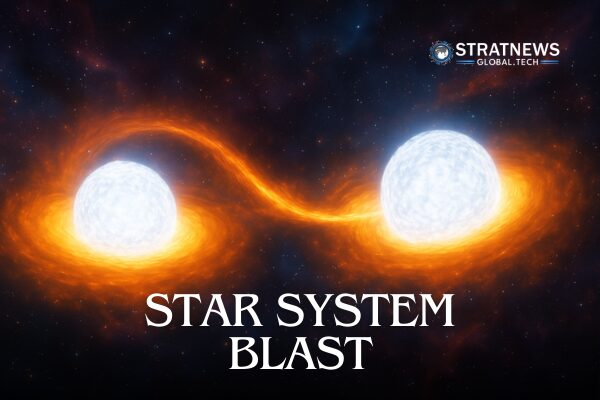Astronomers Discover White Dwarf Pair Set for Rare Quadruple Explosion
Astronomers have found two white dwarfs locked in a close orbit, destined to end their lives in a spectacular quadruple explosion. Located about 160 light-years from Earth in the Milky Way galaxy, these ultra-dense stellar remnants form one of the most extreme binary systems ever observed.
What Are White Dwarfs?
White dwarfs are the compact remains of stars once up to eight times the size of our Sun. After burning through their hydrogen fuel, such stars collapse under their own gravity and shed their outer layers, leaving behind dense cores. These remnants, about the size of Earth, are incredibly heavy—packing the mass of a star into a small volume.
In this newly identified system, one white dwarf has 83% the mass of our Sun, and the other has 72%. Despite their size—only slightly larger than Earth—they are among the densest objects in space.
A Deadly Dance
The two stars orbit each other every 14 hours, separated by a distance just 1/25th of Mercury’s distance from the Sun. This makes them the closest pair of white dwarfs ever found. Over time, they will spiral even closer as the system gradually loses energy.
Eventually, the heavier star will begin to pull material from its lighter partner. This mass transfer will cause the heavier star to reach a critical threshold, triggering a powerful type 1a supernova. In this case, it will unfold in a chain reaction known as a quadruple detonation.
How the Explosion Happens
White dwarfs have layered structures like onions—carbon and oxygen cores, wrapped in helium and hydrogen. As material moves from the lighter to the heavier star, the helium layer on the latter becomes unstable and explodes. This blast ignites the carbon-oxygen core, which then causes explosions in the corresponding layers of the companion star—four detonations in total.
According to researchers, the entire explosion will last about four seconds. When it happens, it would appear 10 times brighter than the Moon in Earth’s night sky—if Earth still exists by then.
A Long Wait Ahead
The expected detonation won’t happen for another 22.6 billion years, far beyond the current age of the universe, which is about 13.8 billion years. Still, this discovery marks the first time scientists have found a white dwarf binary headed for this rare fate.
Had the stars been slightly farther apart, they could have orbited each other peacefully for eternity. But their extreme proximity seals their explosive destiny.
“In a wider orbit, they could indeed live stably without any catastrophic future, but here we know that the explosion will light up our side of the galaxy,” said James Munday, lead researcher from the University of Warwick.
with inputs from Reuters


